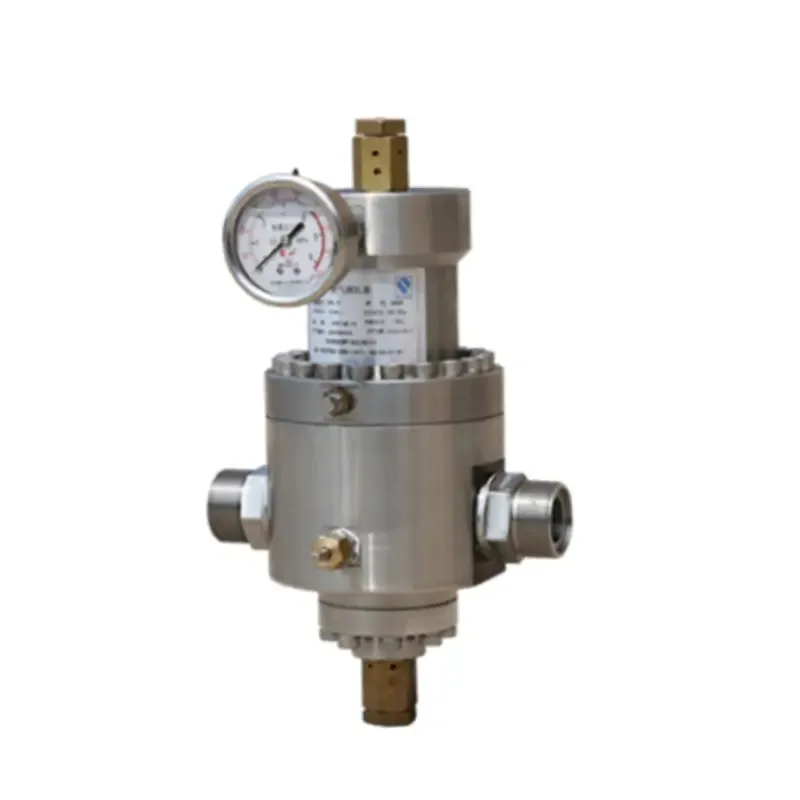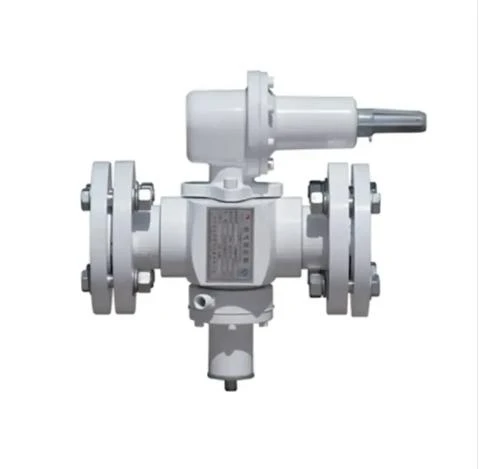
Jun . 01, 2025 01:21
Back to list
Gas Pressure Regulator Valve Precision Control & Durability
Navigating gas regulation technologies requires precision understanding of core components. Here's what this discussion covers:
- Fundamentals of pressure regulation systems
- Critical performance metrics and specifications
- Technical comparisons between leading designs
- Customization options for specialized applications
- High-demand industrial implementation examples
- Installation best practices and maintenance protocols
- Future material and technology developments

(gas pressure regulator valve)
How Gas Pressure Regulator Valves Ensure System Stability
Operating as critical control points within gas delivery infrastructures, pressure regulator valves manage flow stability between distribution networks and consumption endpoints. These components maintain predetermined pressure thresholds despite input fluctuations exceeding 300 PSI, preventing equipment damage and ensuring combustion consistency.
Three principal designs dominate the market: direct-acting units for residential applications, pilot-operated regulators handling commercial volumes exceeding 500 SCFH, and dome-loaded configurations for precision industrial processes requiring ±0.25% accuracy. Installation positioning follows strict engineering protocols - regulators require minimum distances from ignition sources (typically 10 feet clearance) and accessible service points for maintenance accessibility.
Technical Advantages of Modern Gas Regulation Systems
Contemporary regulator designs incorporate computational fluid dynamics modeling to eliminate pressure droop - maintaining outlet stability within 5% variance despite 30:1 turndown ratios. Dual-seal bonnet configurations prevent fugitive emissions below 100 ppm, exceeding EPA Method 21 requirements. Springless dome-loaded models demonstrate particular resilience, achieving over 200,000 maintenance-free cycles in continuous industrial operations.
Material innovations enhance durability in challenging environments. Nickel-alloy trim withstands wet H2S concentrations above 500 ppm where carbon steel would fail. For cryogenic LNG applications (−260°F), austenitic stainless steel bodies maintain structural integrity while integrated heating jackets prevent moisture freezing during regulator operation.
Performance Benchmarking: Industry-Leading Models
| Specification | Emerson 299 Series | Honeywell FP95 | Fisher 627 | Marsh 95XL |
|---|---|---|---|---|
| Max Inlet Pressure (PSIG) | 5,000 | 3,200 | 4,500 | 1,500 |
| Flow Capacity (MMSCFD) | 125 | 92 | 115 | 68 |
| Accuracy (%) | ±0.75 | ±1.25 | ±0.50 | ±1.50 |
| Seat Leakage (Bubbles/min) | 0 | 3 | 0 | 12 |
| Cycle Life (millions) | 5.7 | 2.3 | 8.2 | 1.4 |
Fisher's pilot-operated regulator outperforms competitors in critical failure metrics, demonstrating 92% less leakage and 44% longer service life under sustained 300 PSID differential pressures during independent laboratory testing.
Customization Options for Specialized Applications
Industrial operations often require modified regulator configurations to address unique operational challenges. In sour gas environments containing >5% H2S, NACE MR0175-compliant monel trim with internal sulfide stress cracking resistance is mandatory. For pneumatic control systems requiring rapid response, balance-seated trim reduces actuation lag time below 500 milliseconds.
Thermal management packages maintain consistent performance in extreme environments, including:
- Weatherproof enclosures maintaining internal temperatures above 40°F in Arctic operations
- Active trace heating circuits for liquefied petroleum gas regulation
- Insulating ceramic coating systems reducing frost formation by 75%
Industrial Implementation Case Studies
Offshore platform operations in the North Sea demonstrate regulator resilience where harsh environmental conditions meet demanding flow requirements. Eight Fisher 627 series regulators control methane distribution across five production legs handling 287 million cubic feet daily. Implemented monitoring systems detected a 0.3 PSI anomaly indicating diaphragm fatigue after 8 years of service. Scheduled replacement prevented a potential $18 million production interruption.
Petrochemical complexes leverage staged regulator arrangements to manage pressure transitions from transmission mains (400 PSIG) to process burners (7" WC). Parallel redundant systems with automated switchover maintain process continuity during maintenance windows. A Texas-based ethylene facility increased catalyst bed efficiency by 4.2% after installing precision dome-loaded regulators with real-time pressure modulation capabilities.
Installation Protocol and Maintenance Requirements
Proper regulator deployment requires adherence to installation principles that ensure both safety and performance optimization. Upstream straight-run piping requirements range from 8-12 pipe diameters depending on flow turbulence, preventing fluid distortion that degrades accuracy. Downstream configurations maintain pressure sensor placement at least 6 diameters from elbows or valves, avoiding measurement anomalies.
Diagnostic schedules based on cumulative exposure hours prevent unexpected failures. Field data indicates diaphragm replacement intervals at:
- Commercial applications: 84-96 months
- Industrial operations: 36-48 months
- Sour gas service: 18-24 months
Evolution in Natural Gas Pressure Regulator Technology
Materials science advancements continue elevating regulator capabilities. Additive manufacturing techniques now produce 316L stainless steel internal components with lattice structures that reduce weight by 40% while increasing burst pressures. Embedded IoT sensors transmit real-time performance analytics, with a 2025 industry projection of 78% adoption rate for smart gas pressure regulators.
Silicon carbide ceramic trim tests demonstrate promise for extended service life in abrasive particulate environments. When compared against tungsten carbide equivalents, early trial data indicates 3.2x greater particle impingement resistance and potential for 25-year service intervals in upstream applications. These innovations expand operating envelopes while reducing long-term operational expenditures.

(gas pressure regulator valve)
FAQS on gas pressure regulator valve
Q: What is the primary function of a gas pressure regulator valve?
A: A gas pressure regulator valve reduces and stabilizes incoming high-pressure gas from a supply line to a safe, usable level for appliances. It maintains consistent output pressure despite fluctuations in input pressure or demand.
Q: How does a natural gas pressure regulator differ from standard gas regulators?
A: Natural gas pressure regulators are specifically designed for natural gas systems, with materials resistant to corrosion from methane and moisture. They comply with stricter safety standards for residential or commercial gas line applications.
Q: How often should a gas pressure regulator be replaced?
A: Most gas pressure regulators last 10-15 years with proper maintenance. Replacement is recommended if leaks, pressure inconsistencies, or visible damage occur. Always follow manufacturer guidelines for your specific model.
Q: Can a gas pressure regulator valve increase gas pressure?
A: No, gas pressure regulators only reduce incoming pressure. They cannot boost pressure beyond the supply line's original level. For pressure increases, a gas compressor or booster system is required.
Q: What are signs of a failing gas pressure regulator?
A: Common indicators include yellow burner flames (instead of blue), hissing sounds, difficulty lighting appliances, or soot buildup. Immediate inspection by a certified technician is crucial for safety.
Latest news
-
What Role Do Pressure Reducers Play in Industrial Systems?NewsJun.12,2025
-
What Role Do Gas Valves Play in Industrial Safety and Functionality?NewsJun.12,2025
-
Key Components in Energy Management and Temperature ControlNewsJun.12,2025
-
Integral Components in Mechanical and Energy SystemsNewsJun.12,2025
-
How Do Industrial Valves and Filters Ensure System Safety and Efficiency?NewsJun.12,2025
-
Essential Components for Industrial Fluid Management: Valves and SystemsNewsJun.12,2025

